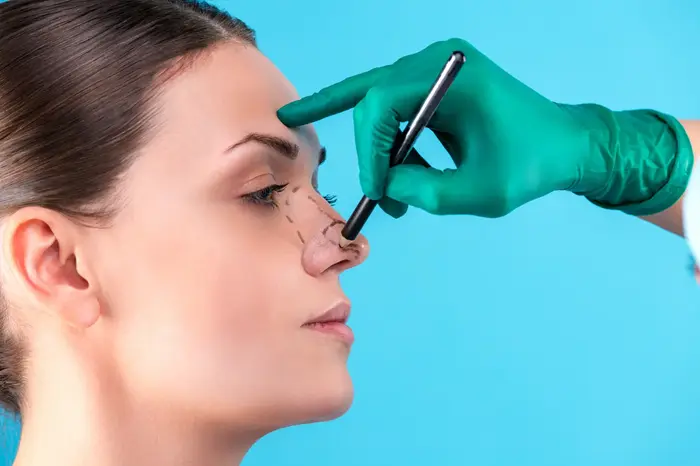Rhinoplasty, commonly referred to as a “nose job,” is a surgical procedure that reshapes the nose for cosmetic or functional purposes. Closed rhinoplasty is a technique where incisions are made within the nostrils, avoiding external scarring. This article explores the top five best closed rhinoplasty surgery procedures, providing insights into their techniques, benefits, and ideal candidates.
1. Standard Closed Rhinoplasty
Procedure Overview
Standard closed rhinoplasty is a traditional approach where the surgeon makes incisions within the nostrils. This method allows for various modifications, including reducing or increasing the size of the nose, altering the shape of the tip, narrowing the nostrils, or changing the angle between the nose and the upper lip.
Benefits
No visible scarring.
Shorter recovery time compared to open rhinoplasty.
Reduced postoperative swelling and bruising.
Ideal Candidates
Individuals seeking minor to moderate changes.
Patients with realistic expectations.
Those without significant nasal structural deformities.
Technique
The surgeon carefully separates the nasal skin from the underlying bone and cartilage, allowing precise modifications. The changes are made internally, preserving the natural nasal structures.
See Also: 5 Best Rhinoplasty Fillers
2. Tip Plasty
Procedure Overview
Tip plasty focuses on reshaping the nasal tip. It is ideal for patients who are satisfied with the overall structure of their nose but wish to refine the tip’s appearance.
Benefits
Targeted approach with minimal invasiveness.
Enhances the nasal tip without altering the nasal bridge.
Quick recovery with minimal discomfort.
Ideal Candidates
Patients seeking refinement of the nasal tip.
Individuals with bulbous, drooping, or asymmetric nasal tips.
Those who prefer a less invasive option.
Technique
Through incisions made within the nostrils, the surgeon repositions or reshapes the cartilage at the tip of the nose. Sutures are used to secure the new shape, and the incisions are closed with dissolvable stitches.
3. Alar Base Reduction
Procedure Overview
Alar base reduction addresses wide or flared nostrils. This procedure narrows the base of the nose, creating a more balanced and harmonious appearance.
Benefits
Improves nasal symmetry.
Enhances facial proportions.
Results in a more refined nasal appearance.
Ideal Candidates
Individuals with wide or flared nostrils.
Patients seeking subtle changes without altering the nasal bridge.
Those with realistic expectations and good overall nasal structure.
Technique
The surgeon makes incisions within the nostrils to remove a small wedge of tissue from the alar base. The remaining tissue is sutured together, reducing the nostril width and creating a more balanced appearance.
4. Dorsal Hump Reduction
Procedure Overview
Dorsal hump reduction is a common procedure for patients with a prominent bump on the bridge of the nose. This technique smooths the nasal profile, resulting in a straighter and more aesthetically pleasing nose.
Benefits
Creates a smoother nasal profile.
Enhances facial harmony.
Can improve self-confidence and satisfaction with appearance.
Ideal Candidates
Individuals with a pronounced dorsal hump.
Patients seeking a smoother nasal bridge.
Those with good skin elasticity and nasal structure.
Technique
Through internal incisions, the surgeon removes or shaves down the excess bone and cartilage forming the dorsal hump. The nasal skin is then redraped over the modified structure, resulting in a smooth and natural contour.
5. Septoplasty Combined with Closed Rhinoplasty
Procedure Overview
Septoplasty is a functional procedure to correct a deviated septum, which can be combined with closed rhinoplasty for both functional and aesthetic improvements. This dual approach addresses breathing difficulties while enhancing nasal appearance.
Benefits
Improves nasal airflow and breathing.
Addresses both functional and aesthetic concerns.
No visible external scars.
Ideal Candidates
Patients with a deviated septum and cosmetic concerns.
Individuals experiencing breathing difficulties.
Those seeking comprehensive nasal correction.
Technique
The surgeon makes internal incisions to access the septum and correct the deviation. Simultaneously, aesthetic modifications are made to the nasal structure through the same internal approach. This comprehensive technique ensures both functional and cosmetic improvements.
Conclusion
Closed rhinoplasty offers a range of procedures to address various nasal concerns, from aesthetic refinements to functional improvements. The top five procedures discussed—standard closed rhinoplasty, tip plasty, alar base reduction, dorsal hump reduction, and septoplasty combined with closed rhinoplasty—each provide unique benefits and cater to specific patient needs. Choosing the right procedure depends on individual goals, nasal anatomy, and the surgeon’s expertise. A thorough consultation with a qualified facial plastic surgeon is essential to determine the best approach for achieving the desired outcome.
Related topics:

